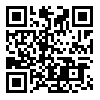Volume 10, Issue 4 (3-2022)
2022, 10(4): 45-54 |
Back to browse issues page
Download citation:
BibTeX | RIS | EndNote | Medlars | ProCite | Reference Manager | RefWorks
Send citation to:



BibTeX | RIS | EndNote | Medlars | ProCite | Reference Manager | RefWorks
Send citation to:
Najafi A, Khalaj G, Ahmadi Rad E. Synthesis and properties evaluation of TiB2 nanoparticles produced by sol-gel method. Iranian Journal of Ceramic Science & Engineering 2022; 10 (4) :45-54
URL: http://ijcse.ir/article-1-730-en.html
URL: http://ijcse.ir/article-1-730-en.html
1- Saveh Branch, Islamic Azad University , najafi@iau-saveh.ac.ir
2- Saveh Branch, Islamic Azad University
2- Saveh Branch, Islamic Azad University
Abstract: (2061 Views)
In this study, TiB2 particles were synthesized by sol-gel method in nanometer size. First, the sol was prepared in a four-component system of alkoxide -boron carbide -water-alcohol based on the sol-gel chemical process under acidic conditions at pH = 5. Titanium tetra-isopropoxide and boron carbide were used as raw materials. After hydrolysis and gel formation followed by heat treatment, TiB2 nanopowder product was prepared. The effect of pH and temperature parameters on the synthesis process of these nanopowders was investigated. To evaluate the mechanism of product formation in the sol-gel process DLS, Zetameter, SEM-DTA / TG-XRD-FTIR analysis methods were used. It was shown that by controlling the pH in the range of 5, precursor particles containing Ti sources was below 10 nm. The FTIR data showed that the powder prepared at 900°C had boron and titanium bonds and detected carbon bonds in the range of 1100- 1650 cm-1 . DTA analysis showed that the early nuclei of TiB2 particles formed in the range of 1380 °C. This was confirmed by X-ray diffraction studies and was completed by increasing the temperature to 1430 °C in TiB2 crystalline phase. SEM microscopy images showed that the synthesized TiB2 particles were in the range below 100 nm with a narrow and uniform distribution amplitude.
Send email to the article author
| Rights and permissions | |
 |
This work is licensed under a Creative Commons Attribution-NonCommercial 4.0 International License. |




